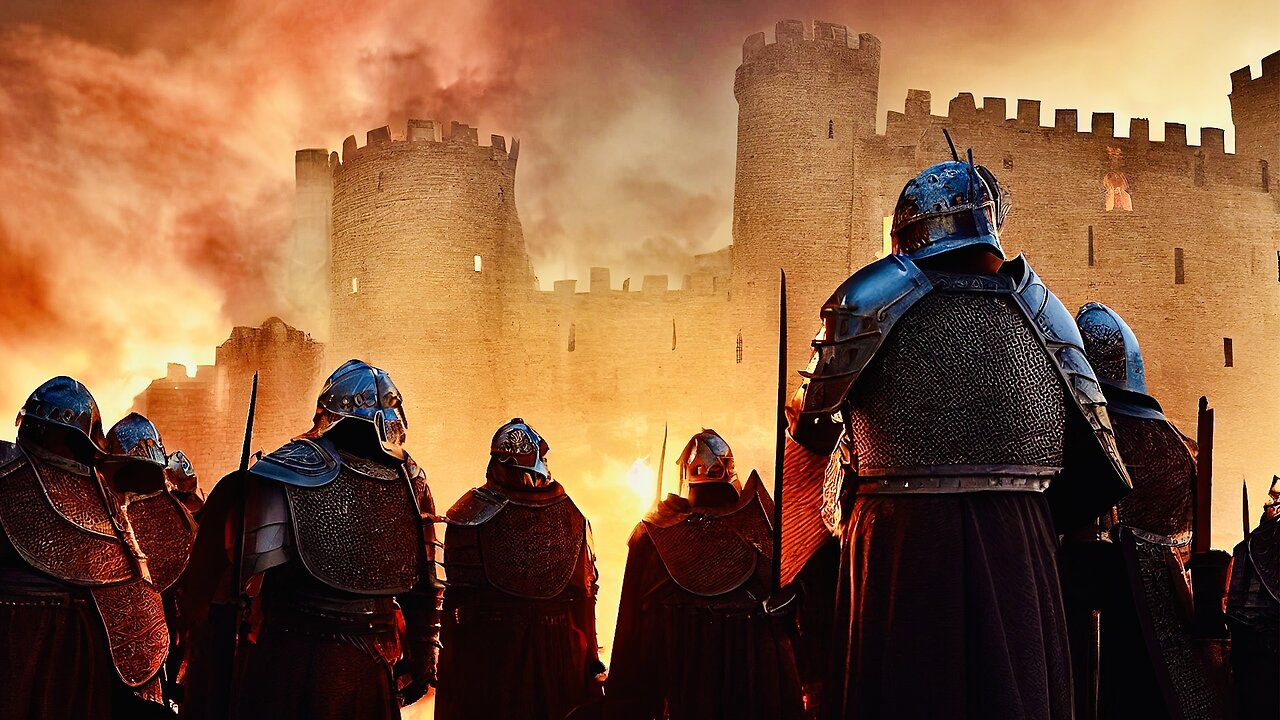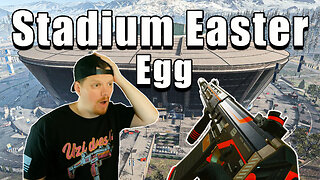Premium Only Content

Story of Medieval Castles - How Master Masons Built Them - Full Documentary
Medieval castles were built from the 11th century CE for rulers to demonstrate their wealth and power to the local populace, to provide a place of defense and safe retreat in the case of attack, defend strategically important sites like river crossings, passages through hills, mountains and frontiers, and as a place of residence. Whether a permanent home for a local lord or a temporary one for a ruler embarking on a tour of their kingdom, castles were converted from wood into stone and became ever more impressive structures with more and more defensive features such as round towers and fortified gates.
Evolution
A good location for a castle was on a natural rise, near a cliff, on the bend of a river, or where older fortifications such as Roman walls could be usefully reused. Castles needed their own water and food supplies and usually a permanent defensive force, additional factors to be considered when choosing a location.
Castles were an expensive undertaking which could take years to finish. A master mason, who was, in effect also the architect, led a team of hundreds of skilled workers ranging from carpenters to blacksmiths and dyke specialists to common labourers. The transportation of materials was the highest cost of all so the proximity of a local quarry was a big plus.
THE TOWER KEEP BECAME A STAPLE FEATURE OF MEDIEVAL CASTLES, ALTHOUGH THEY WERE CALLED A DONJON PRIOR TO THE 16TH CENTURY CE.
The earliest form of castle was a simple wooden palisade, perhaps with earthworks, surrounding a camp, sometimes with a permanent wooden tower in the centre. This then evolved into the motte and bailey castle - a wall encircling an open space or courtyard (bailey) and a natural or artificial hill (motte) which had a wooden tower built on top of it. These were especially popular with the Normans from the 11th century CE.
In the next stage of development, an outer wall was built of stone on top of the motte and then known as a shell keep. Finally, in the 12th century CE, the outer wall and main central tower also came to be built of stone, but not usually on the motte itself as that was not stable enough to use as a foundation for such a heavy structure. Indeed, entirely new locations might be preferred or required, and the foundation of choice was bedrock which prevented any undermining by an attacking force. The keep became a staple feature of castles, although they were called a donjon (from the French word meaning 'lord') prior to the 16th century CE. Usually with three or more stories (tower keeps); some were lower and are called hall keeps. The keep was the heart of the medieval castle and the last point of refuge in case of attack or siege. Before they got to the keep, though, attackers had to negotiate a long list of defensive features.
Features
The typical features of a medieval castle were:
Moat - a perimeter ditch with or without water
Barbican - a fortification to protect a gate
Curtain Walls & Towers - the perimeter defensive wall
Fortified Gatehouse - the main castle entrance
Keep (aka Donjon or Great Tower) - the largest tower and best stronghold of the castle
Bailey or Inner Ward (courtyard) - the area within a curtain wall.
Moat
An artificial ditch or moat was dug to surround the entire castle complex and could be filled with water permanently or temporarily during attack in some cases. As creating a moat was a huge undertaking, the presence of natural rises and depressions were important factors in choosing where to build the castle in the first place. The earth or stone excavated while preparing the moat could be used to build up the mound on which the castle would be subsequently built. The moat was made deep enough to impede attackers on horse, foot or equipped with siege towers. The sides were steep and could be riveted with wooden stakes to increase their slipperiness. Stakes might also be placed in the bottom to further impede crossing. If filled with water, only a half-metre depth was required to obstruct the enemy and make them more vulnerable to missiles fired from the walls above.
Barbican
The barbican was a defensive fortification built to protect potential weak spots like a gate. Typically consisting of a short stretch of fortified wall, perhaps forming an echelon form, it allowed the defenders to ward off a direct attack on the wall or gate proper. The barbican could be protected by covering fire from the towers behind it and was sometimes surrounded by its own wall and/or ditch (with accompanying drawbridge or swing bridge) when it was known as a courtyard barbican. A second type was the passageway barbican which was similar to a fortified corridor leading from a gateway outwards. By the mid-13th century CE, barbicans were set more distant from the outer wall, at an angle from a gate and incorporating a 90-degree turn within them (between the entrance and exit bridges) to further impede access to the castle proper.
#history #architecture #interestingfacts
-
 3:36
3:36
Seeker Land
2 months agoCreate Your AI Girlfriend ~ Free Account ~ Encrypted Privacy ~ Link In Description ~ Candy AI
971 -
 9:03
9:03
MattMorseTV
15 hours ago $15.93 earnedTrump’s America First CALL TO ACTION.
22K51 -
 17:33
17:33
a12cat34dog
21 hours agoRUMBLE TAKEOVER @ DREAMHACK | VLOG | {HALLOWEEN 2025}
43.4K25 -
 10:48
10:48
GritsGG
15 hours agoWarzone Stadium Easter Egg! Unlock Grau Blueprint EASY!
11.2K2 -
 LIVE
LIVE
Lofi Girl
3 years agolofi hip hop radio 📚 - beats to relax/study to
512 watching -
 1:43:54
1:43:54
TruthStream with Joe and Scott
3 days agoStuey and Elisa V interview Joe and Scott Q, AI, Glutathione, Tylenol etc 11/5 #510
13.9K6 -
 29:15
29:15
BlabberingCollector
2 days agoHarry Potter X Fortnite, Fans Reee Over Trans Rights, NEW Audiobooks Are OUT, Wizarding Quick Hits
31.6K4 -
 1:20:42
1:20:42
The Connect: With Johnny Mitchell
6 days ago $13.66 earnedThe Truth Behind The U.S. Invasion Of Venezuela: Ed Calderon Exposes American Regime Change Secrets
39.7K25 -
 2:10:18
2:10:18
FreshandFit
7 hours agoAfter Hours w/ Girls
132K36 -
 2:06:29
2:06:29
TimcastIRL
13 hours agoAirlines Cancel Over 700 Flights, Travel APOCALYPSE Is Now, Trump Says END FILIBUSTER | Timcast IRL
236K119